The Pontiac Legend was Built Before the GTO and Trans Am
It’s safe to say that most car people, and even a lot of non-car people, have heard of Pontiac. Even though the 84-year-old GM motor division went extinct in 2010, models like the GTO and Trans Am live on in muscle car and pony car legend and are firmly ensconced in the collector-car pantheon.
Pontiac’s reputation was built before these iconic models, however, and it was done on the drag strip with cars like the Catalina. Originally a trim on the Chieftain—for 1959, the Chieftain was gone and the Catalina became its own full-size model, offered as a four-door sedan, or two-door sedan–which was technically a coupe. Catalina’s powered by Super Duty 421-cid V8 engines ruled the ¼-mile and in 1962, a Catalina driven by Joe Weatherly racked up 20 of 52 NASCAR checkered flags and the manufacturer’s championship.
The Owner:
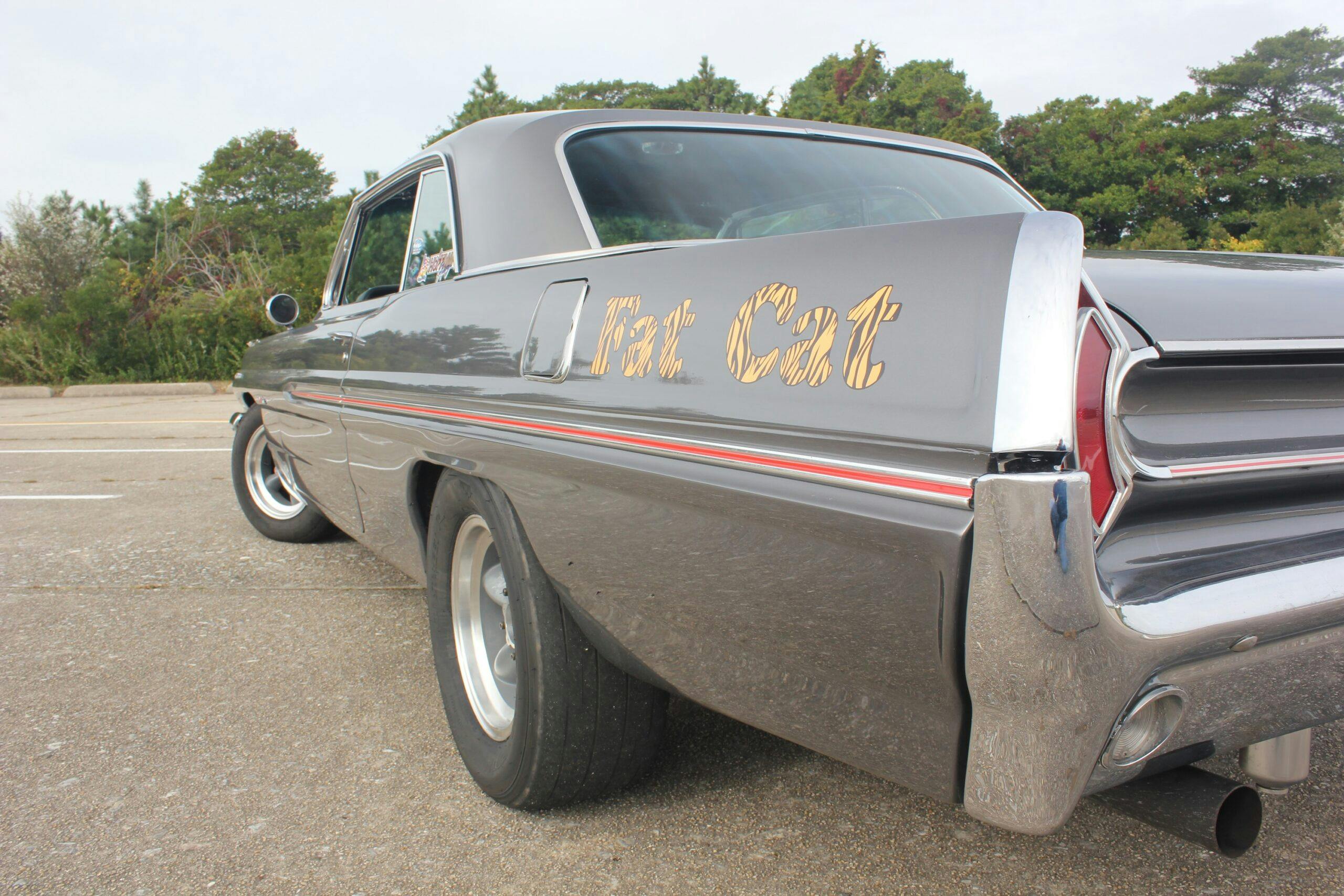
Retired NYPD ESU/SWAT Team Detective, Jimmy Shaloo, became enamored with Pontiac’s muscle machines at a young age. Born and bred in Queens, NY, he fondly recalls his bike rides past Myrtle Motors in Middle Village, to leer through the windows at the new models. Pontiac’s “great one” was Shaloo’s first love. His brother Bill had 1966 GTO since new. Later, Shaloo met his buddy Andy, who had a ’65 goat and Shaloo would accompany him to the drag strip, acting as a one-man pit crew.
As for his attraction to the Catalina, Shaloo tells the tale of a souped-up 1962 model with racing stripes that would rumble through the neighborhood and roast its bias ply tires up and down the avenues. The sights and sounds of that potent “Poncho” would leave a lifelong impression.
Shaloo waxed nostalgic about other cars he’s had, including A ‘55 Chevy and 1968 GTO that came and went. But it was around 2015, a decade after retiring from the force, that he began to look for another classic Pontiac. Initially, his sights were fixed on a first-generation GTO, like those owned by his brother Bill and buddy Andy, but nice examples were far too pricey.
Later that year, destiny presented itself in the form of a very clean, all-original, 1962 Catalina for sale at a car show. Shaloo didn’t think twice and grabbed the blast from his past. He says he got an adrenaline rush from his time wearing blue when he got to make arrests and help save lives. Hot-rodding and racing his vintage Pontiac would provide a different kind of rush, but a rush nonetheless.
The Guru:
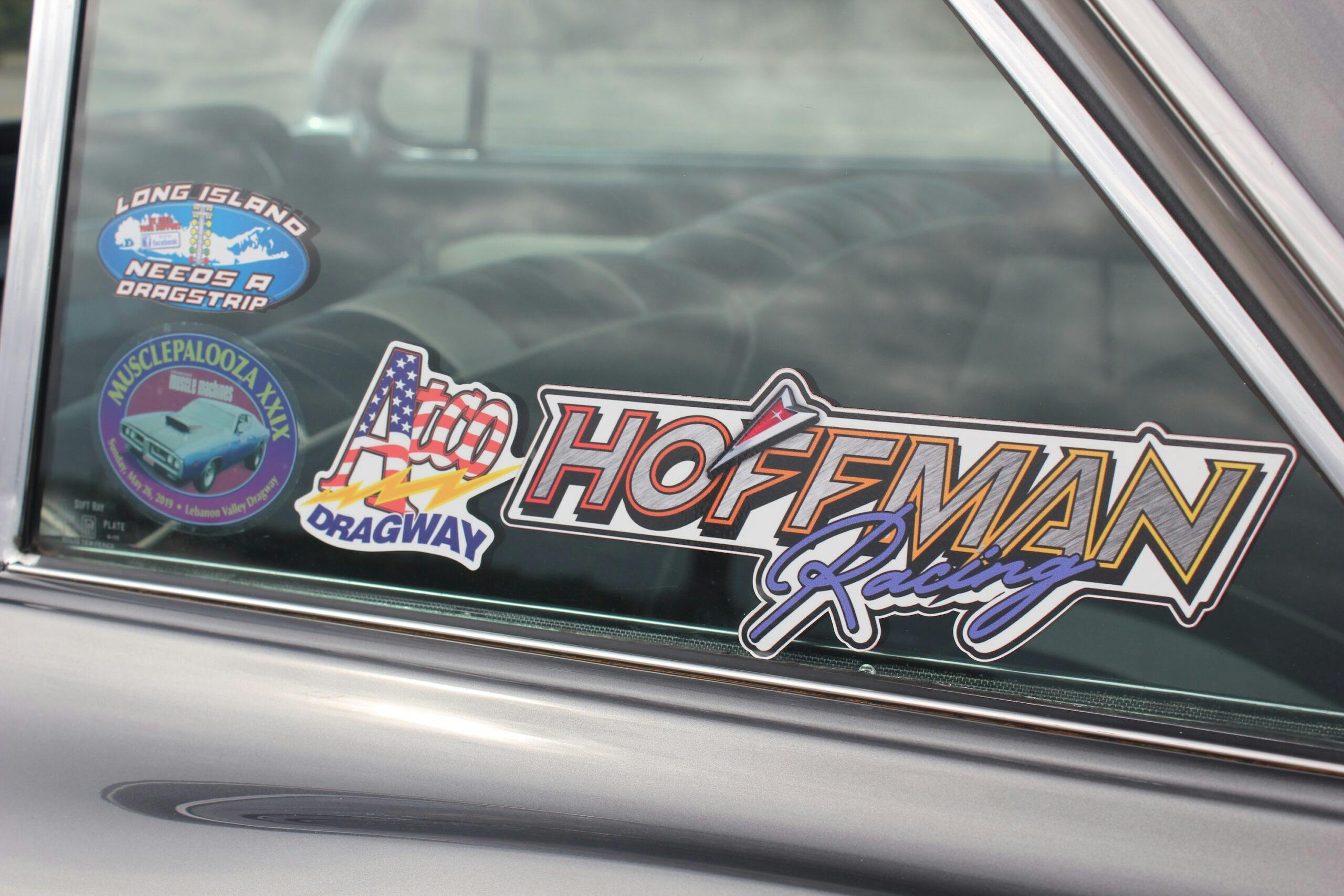
Every masterpiece owes itself to a talented, skilled, and passionate artist. In the case of the Pontiac hobby on the East Coast, over the last three decades, a particular artist comes to mind. Often referred to as the “Guru”, Richie Hoffman has applied his lifelong wealth of Pontiac knowledge and mechanical prowess to a masterful career and loyal following.
By his own account, Richie, now 58 years old, has been wrenching on Pontiac iron since he was fourteen. He credits another Queens native and famed Pontiac drag racer, Butch Di Lorenzo, with his early exposure. Butch was renowned for his built 1986 Grand Am which ran a 9.50 quarter-mile at 141-mph. Richie worked with Butch for fifteen years and bought the Grand Am two years prior to Butch’s passing in 1998. It now runs 8.90s at over 150 mph. Since 1999, Richie has been a mainstay at the Moonlight Garage in New Hyde Park, where his experience and expertise are in great demand.
The Story:

The Pontiac faithful is a tight-knit group, to say the least. About twelve years ago, Shaloo’s buddy Andy introduced him to Richie. Ironically, Andy used to work with Richie at his first shop, a Gulf gas station owned by Butch DiLorenzo. A drag-race-bred friendship was born, with he and Richie frequently going to English Town and Atco raceway in New Jersey. When he acquired the Catalina, he had every intention of having Richie Hoffman make his mark on it.
The Car:

Shaloo cruised his cool Cat, in factory form, for a year before coming down with a case of hot rod fever. There would be no LS swap here. He was going to keep it old school and all Pontiac. Once again, his buddy Andy put in his two cents, talking him into finding a period correct 455-cid Pontiac motor– believed to be out of ’73 Firebird. He then removed the Catalina’s original 389-cid engine for safekeeping. Shaloo brought the car to Richie’s personal garage, where the two-year build took place.
Richie broke down the motor to its bare block and reworked it. He bored it .040″-over, offset ground (stroked) the factory crank, and installed forged internals including, SCAT connecting rods and Ross flat-top pistons. A Bullet Racing hydraulic camshaft provides considerably higher than stock lift and duration while Harland Sharp roller rockers open and close all stainless-steel valves.

Inhalation starts with a 1000-cfm Holley four-barrel carburetor and flows into the engine through an Edelbrock Performer RPM aluminum intake manifold and Edelbrock aluminum cylinder heads, both ported and polished by Frankie Ford. Topping the heads are tall aluminum valve covers.
Exhaust begins with, 1-7/8-inch ceramic-coated Mad Dog long tube headers. They were the last ones left on the shelf at Nunzi’s Automotive in Brooklyn, owned by legendary Pontiac expert Nunzi Romano. A 3½-inch collector scavenges the gasses and shoots them through an X-pipe and custom 3-inch tubing. A pair of Walker Ultra Flow mufflers belt out a raspy growl.
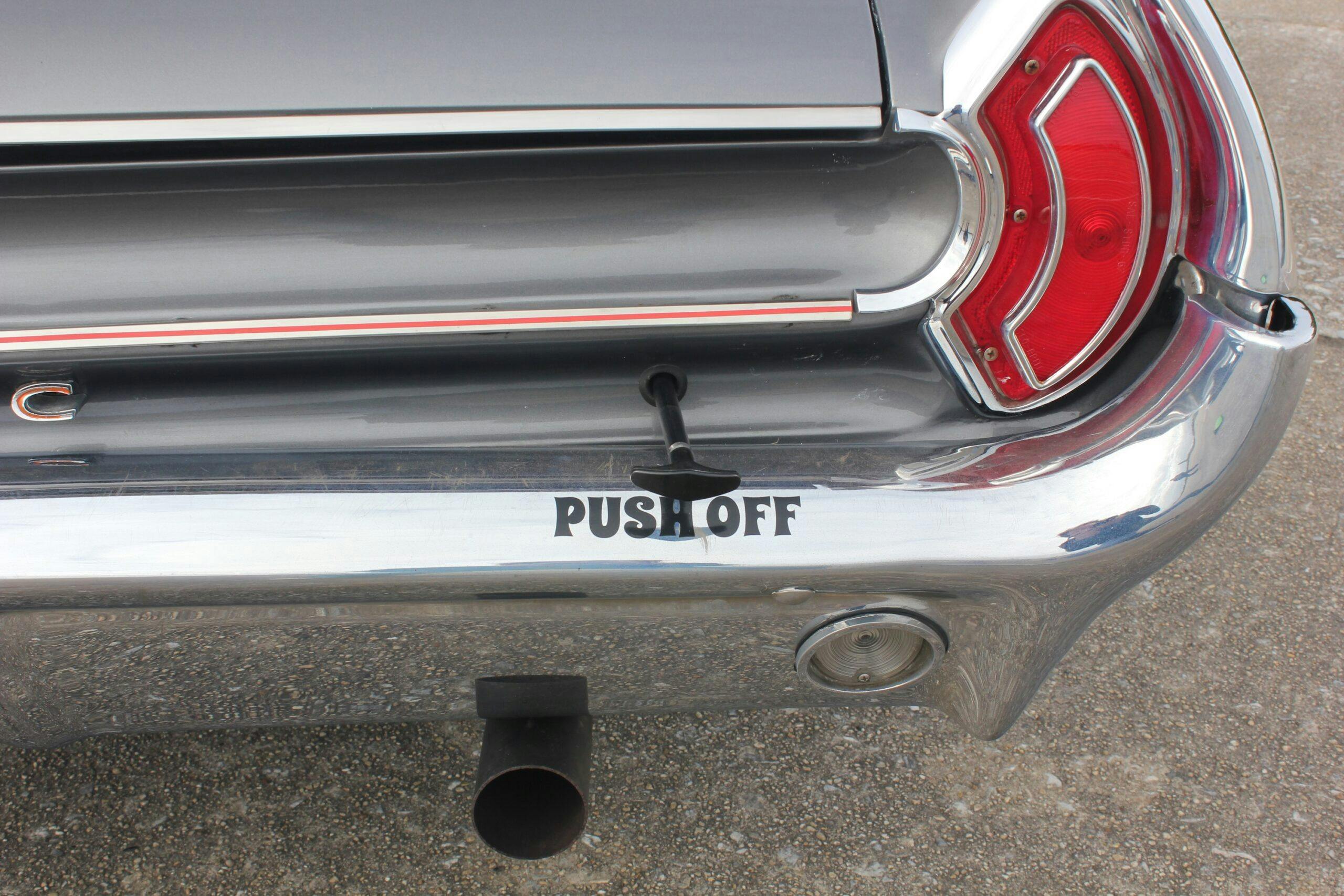

To better wield the mighty motor’s mojo, Richie replaced the factory three-speed Hydra-Matic transmission with a Turbo 400 three-speed automatic. It features an upgraded shift kit, a heavy-duty drum and clutch pack, and a 10-inch torque converter. Richie also modified the shifter by raising and tuning it to lock into each gear. The power goes to the rear wheels via the stock rear differential housing stuffed with 4.10 gears with a spool and Mark Williams 31 spline axles. The factory chassis was upgraded with power front disc brakes, an improved line lock, and the addition of a rear sway bar. Emphasizing the drag setup is a trunk-mounted battery with an external emergency shut-off and a quick access fuel filter.
All-told, the sixty-two-year-old, 4,050-lb Catalina puts down 525 hp and 600 lb-ft. Richie Hoffman says, “I built it like I would build my own.” He also races it like it’s his own. Richie claims a best ¼-mile pass of 11.78 at 114 mph at Atco raceway, before they ceased operations.
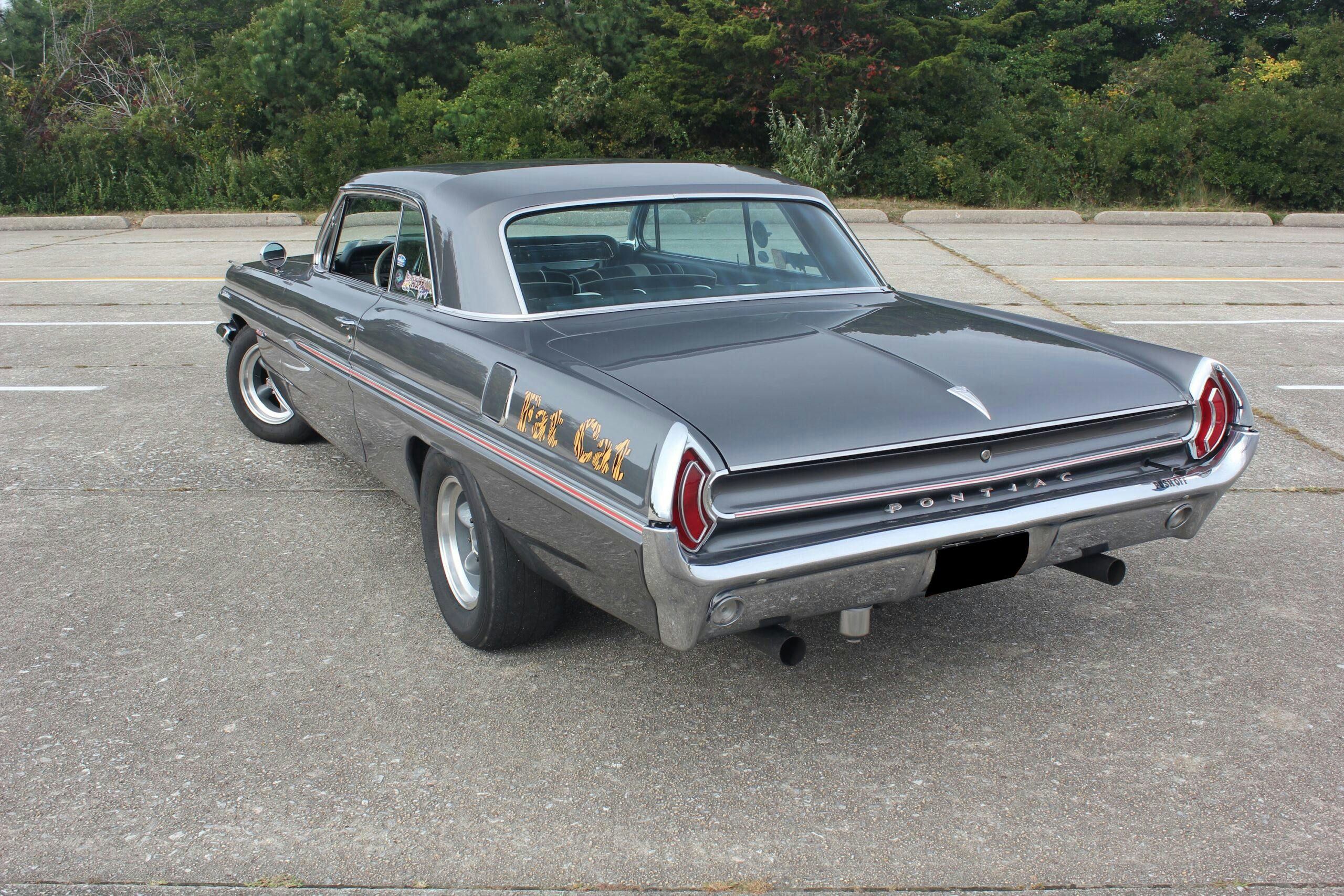
Furthering the Catalina’s old-school toughness is a set of American Racing Torque Thrust wheels, 15×6-inch in front, 15×7 inches in the rear. Shaloo leaves the center caps off the rear wheels for that added drag vibe. Radial rubber resides up front while Mickey Thompson drag radials, basically DOT-legal slicks, wrap the rear rollers and enable sticky off-the-line grip.
Inside, he had the original maroon interior redone in black and white by Top Stich Upholstery in Patchogue, New York. He also added a tachometer/shift light and gauges for water, oil temperature, and voltage. The ’70s-style sparkling plastic steering wheel was on the car when he got it. It looked cool, so he left it.
On the exterior, the original acrylic red paint was changed to a modern basecoat/clearcoat metallic gray, a factory Audi color. It was beautifully laid down by Bona Fide Auto Collision, also in Patchogue, New York.


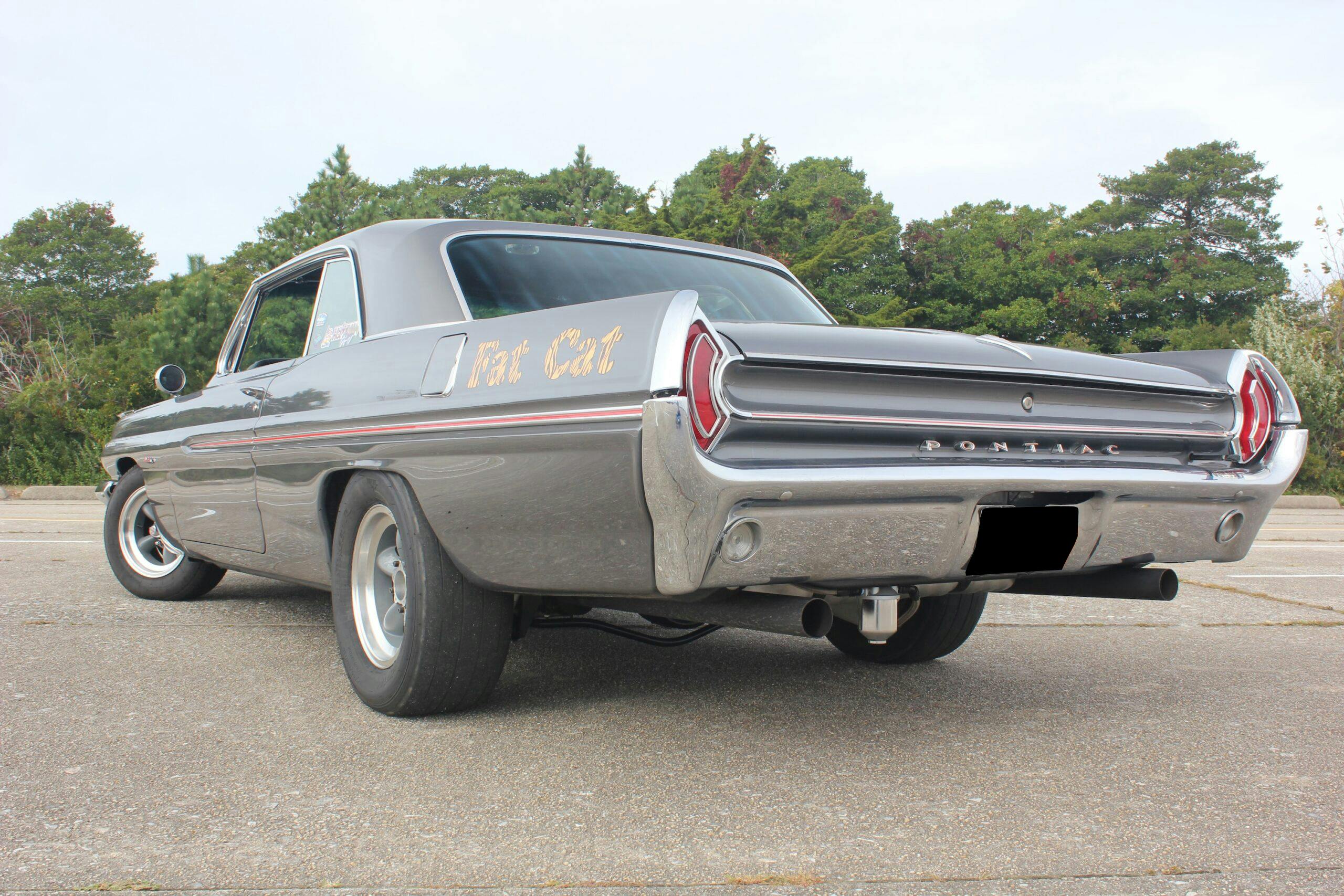
The additional details are subtle but perfectly executed and purely Pontiac. Shaloo removed the brightwork on the upper rear quarters and applied red striping in the lower chrome side trim. He matched it with red “455” badges on the front fenders, and vintage Pontiac Indian Head decals on either side of the functional hood scoop. He put an array of track decals and Hoffman Racing livery on the rear quarter glass. Last but certainly not least, Shaloo named his creation the “Fat Cat” and had decals specially made to that effect. He ran with Pontiac’s 1960’s GTO “tiger under the hood” marketing tagline and chose lettering featuring tiger stripes.

Through his passion and with help from his Pontiac aficionado friends, Shaloo has the exact car he always wanted. Standing next to his pride and joy, he exalts the Catalina’s classic design, ample power, and rarity. Shaloo says the “Fat Cat” always draws a crowd at shows and he and Richie still drag her a couple times a year at Riverhead Raceway and Lebanon Valley Speedway in New York–after all that’s what it was built for. He has no intentions of ever parting with his legendary Pontiac and says that his son Kevin will inherit it.







I live next to the city of Pontiac Michigan. Their lines of cars were historic and legendary. Not in the same class as many “Indian Head” models, but my 1985 Fiero GT was as “European” as was ever made in the US…..owing to its mid-engine design. The BEST engine sound is the one behind you. ❤❤
In 1972 high school auto shop I rebuilt my 1962 Pontiac Catalina two-door hardtop. I traded my motorcycle for the basket case. 389 four barrel race cam Muncie 4 speed red with white top. I never took it to the strip but it was a winner on the street. It’s nice to see the return of the great cars of the 60’s.
Had a 64 GTO, highly modified. After blowing 3 rear ends, put a 57 Pontiac whole rear Axles assembly in car & solved that problem. Had every ratio from 2.91 thru 4.88 all set up in “hams” for qwik change. Had upgraded eng to 360 HP with 65 intake cam etc & later got a 421 super duty w/11 or 12:1 pistons, forged crank/rods but kept tri-power. Put Pontiac finned Alum brakes all around. They fit rear w/no trouble but Had to modify front spindles to accept brakes there. Was a Cpe w/post, heaters etc. Ran 3.55 on street & Muncie 4 side, w/Hurst shifter. Ran @ W Hampton, new Ctr Moriches, English town, Westbury until all NY tracks closed. Sold car to pay for flying lessons, became airline pilot for much better adrenalin rush. No regrets.
Those who are truly Pontiac fans also dig into the history and development of Pontiac performance. It begins with the introduction of the 1955 V8, and the next year’s 1956 Pontiac 285HP 2×4 316CI Nascar engine. This is the year the horsepower war amongst the car manufacturers really took off and the slogan, “Race on Sunday, sell on Monday” was the thinking of the day. Pontiac had the 1957 fuel injection and tri-power option. 1958 was tri-power, and 1959 was the “420-A” option and the start of the 389 Super Duty engine which led to the 421SD. Pontiac also sold performance parts over the counter. Often missed in Pontiac history were the trophy/class winning efforts of Mickey Thompson who built everything from a 2-cyl Pontiac drag racer to the Bonneville streamliners. Bobby Unser won the Pikes Peak Championship Car class in 1961 with his specially built Indy roadster powered by a Pontiac 389CI having fuel injection and roller lifters. The GTO is perhaps the most iconic and known of Pontiac’s performance line-up, but Pontiac performance began way before the GTO ever hit the showroom floor.
I have a 1949 Cadillac Fleetwood Limo 75. Can a 350 Chevy ( with transmission) be put in place of original 331 engine?
Yes, but you’ll need a trans adapter plate to go from the BOP ( Buick, Ols, Pontiac) to Chevy
I bought a 68 GTO new, traded it in 1970 for TransAm. Street raced it in Ohio. Beat many of cars including a 68 428 Mustang, a 70 429 Torino, a 70 455 Stage 1 Buick, 70 Z28, a 70 Plymouth Superbird 440 6 pack and 68 4 speed Corvette. Raced a built 390 dual 4 barrel, w/headers, w/traction bars against my factory TransAm single 4 barrel Ram Air III w/factory exhaust manifold no traction bars, and lost by only 1 car length. Loved that car.
Love it!! I own a 62 Bonneville 4 door hard top. Brought back to life after sitting in an open car port for almost 30 years. Not a restoration – it is a resurrection! Really enjoyed the pictures and history. Fgk
Great article! I own a 65 Bonne convert with a 389 4 throat carb every factory option even power vent windows. So where can I find a 421 for it ?
My ’63 Bonneville convert sits patiently in my garage, with the battery tender keeping her warm and ready for our next outing.
She has been in the family since January of ’65, passed down from one to the other of us, until finally coming to me in ’76. I learned to drive in her, and she is even more fun now.
She is all stock, 389 4bbl, with a 4-speed Super Hydra-matic (Jetaway, for you Olds guys), and a 2:69 rear which cruises so comfortably on the highway. She has power seat, brakes, steering, antenna, 8-lug wheels, factory AM/FM, reverb, Guide-Matic…and more factory options.
There is nothing like moving around in that much steel with that much oomph under the hood (particularly with the top down).
Enjoy that ’62 Cat. Sweet car.
Best buddy Fred had a 1968 Bonneville , 421 with tripper 4 speed bench seat. Back seat was nice too Lost the clutch linkage on our way back to Michigan from Fla. We made it back though great memories!!!
My favorite Catalina is the 1965 2+2 convertible with a 421, 3 deuces and a 4 speed. You can’t find one anywhere.
I have long believed that the most desirable early Muscle Car was the 1963 Tempest LeMans. Small car with a 326, the year before the GTO. I wonder if a Canadian version would have had the Chevy 327? Easily hopped up and lighter, that would be even better. Anyone know?
The Canadian Pontiac was a Chevrolet with a Pontiac body for the longest time and the names were all different. The Grand Prix and GTO were sort of “special order” for a few years. In ’66 a Beaumont with a 396 was the “Canadian GTO”
The introduction of the Firebird was the start of Real Pontiac up here.
A 1963 small Pontiac would have been an Acadian and a 283 would have been available. It was a Chevy II in disguise. When the Chevelle was introduced in 1964 the Pontiac version was Beaumont.
Yeah, it was confusing!
Marketing wise our dealer system paired Chevrolet and Oldsmobile together and Pontiac with Buick and GMC. truck. Cadillac was given to dealers in large population areas and were usually Pontiac, Buick.
Now Chevrolet, Buick and GMC all sell from one store which looks like a truck dealership.
Being in GM parts for many years and ending up with Hyundai I saw the decline which was in my opinion lack of foresight by GM management. “We make money, not cars” was the motto. Somewhere along the line it was forgotten that SELLING cars was the way the money was made.
The base engine in 55-62 Canadian Pontiac’s was the Chevy 261 six. GM did not use it in the 1954 Corvette Cuz it was a Truck motor??
Don’t know the answer to your question about a 327 in the Canadian LeMans in 1963, but why would you want more torque? Bought a new ’63 LeMans with the 326 V8 (actually 336) and a 3-speed manual trans (4-speed available only with the 4-cylinder, otherwise, a 2-speed automatic with either engine). Blew the rear end twice within the first year. The dealership service area had several similar cars up on lifts with the axle half-shafts hanging out of the transaxle while waiting for parts.
Why was my reading of this article blocked by an advertising screen that could not be bypassed? I enjoy your articles, but if this intrusion persists, I’ll unsubscribe.
Hi Doug,
If you get a chance, please send a screenshot of your issue to me at eeckart@hagerty.com. Any screens that come up should be able to be bypassed, but I’m happy to take a look. Thanks for the heads up!
The scoop is a nice period addition as it sure looks like the ones Ford installed in the 50s, 60s and early 70s heavy duty trucks.
In the early 1960s the Los Angeles Police Department acquired a pair of highly modified Catalinas to chase down speeders on newly-opened portions of the city’s freeway system. I looked at one parked outside a hospital where my mother worked. It was equipped with a massive roll cage, aircraft bucket seats, harnesses, and a huge Stewart Warner recording speedometer on the dashboard. A few years ago I tried to find out what happened to them, but nobody with the city or LAPD knew.